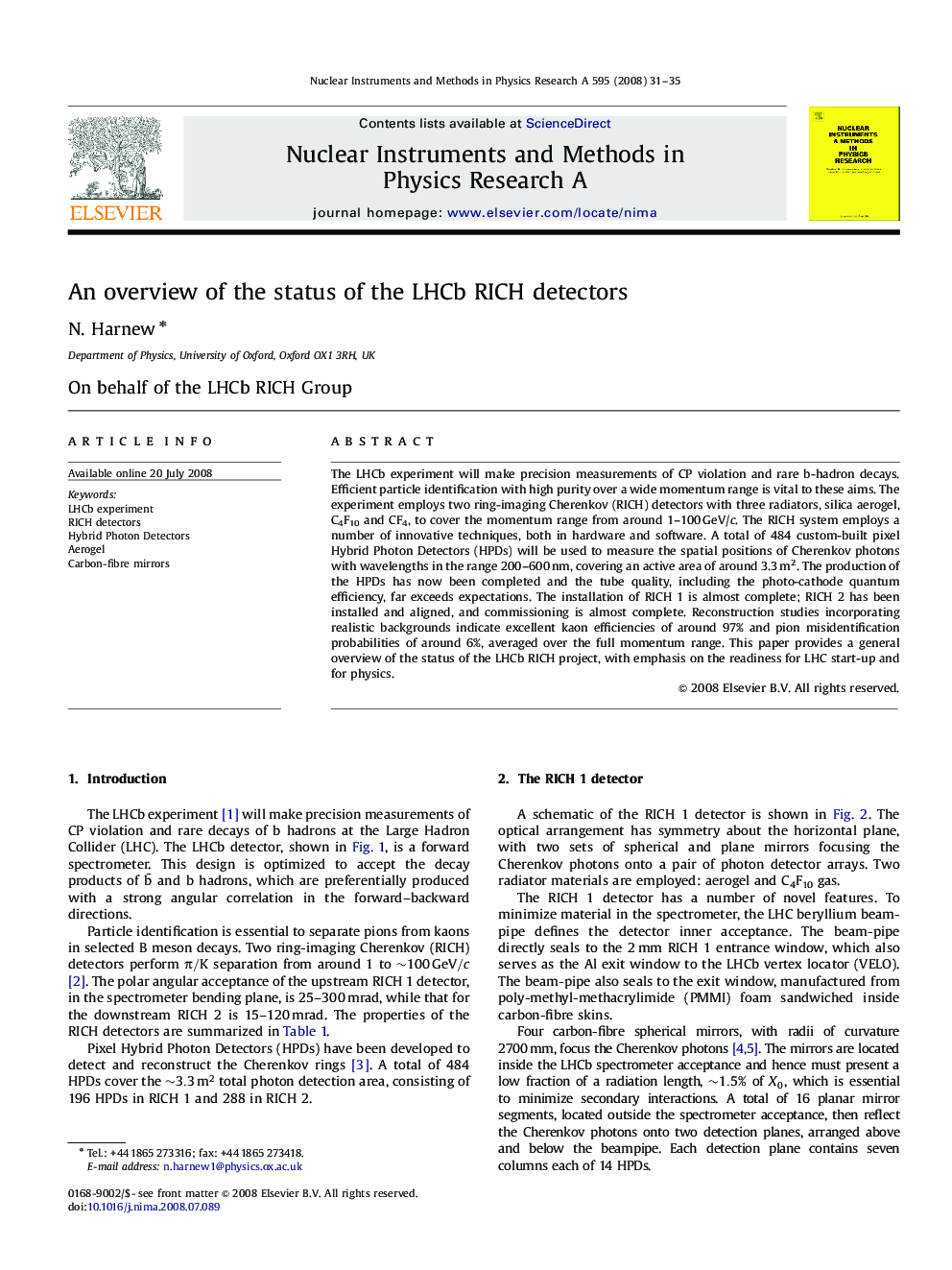| Article ID | Journal | Published Year | Pages | File Type |
|---|---|---|---|---|
| 1829144 | Nuclear Instruments and Methods in Physics Research Section A: Accelerators, Spectrometers, Detectors and Associated Equipment | 2008 | 5 Pages |
Abstract
The LHCb experiment will make precision measurements of CP violation and rare b-hadron decays. Efficient particle identification with high purity over a wide momentum range is vital to these aims. The experiment employs two ring-imaging Cherenkov (RICH) detectors with three radiators, silica aerogel, C4F10 and CF4, to cover the momentum range from around 1-100Â GeV/c. The RICH system employs a number of innovative techniques, both in hardware and software. A total of 484 custom-built pixel Hybrid Photon Detectors (HPDs) will be used to measure the spatial positions of Cherenkov photons with wavelengths in the range 200-600Â nm, covering an active area of around 3.3Â m2. The production of the HPDs has now been completed and the tube quality, including the photo-cathode quantum efficiency, far exceeds expectations. The installation of RICH 1 is almost complete; RICH 2 has been installed and aligned, and commissioning is almost complete. Reconstruction studies incorporating realistic backgrounds indicate excellent kaon efficiencies of around 97% and pion misidentification probabilities of around 6%, averaged over the full momentum range. This paper provides a general overview of the status of the LHCb RICH project, with emphasis on the readiness for LHC start-up and for physics.
Related Topics
Physical Sciences and Engineering
Physics and Astronomy
Instrumentation
Authors
N. Harnew, On behalf of the LHCb RICH Group On behalf of the LHCb RICH Group,
